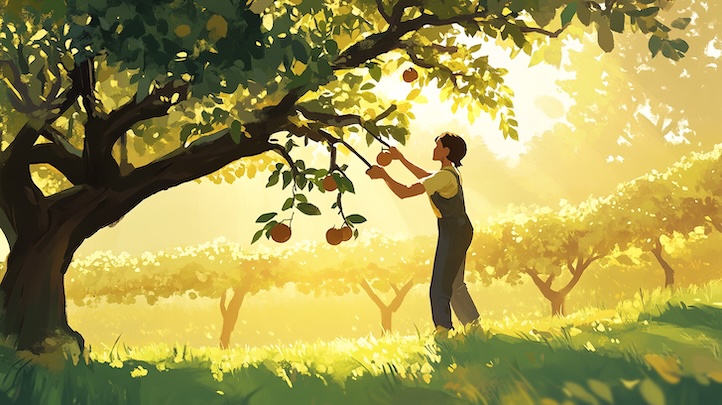Springtime feels like the Earth is born again
 by Galen Lichterfeld
by Galen Lichterfeld
A huge thanks to David over at Wild Folk Farm, in Vassalboro, whose digital expertise has brought our communications platform online.
We are still adding to and updating it. Please email: office@symmetreearborist.me with any suggestions. The Contact Page is a great way to get in touch for a free estimate. Please share with neighbors or friends who may be needing tree work done this season or just want their property assessed.
From the Arborist’s Eye
Spring is such an exciting time! It feels like the Earth is born anew: the light bringing warm breezes, scents of moisture and greenery. The birds return, frogs start to sing, and humans step out into their yards to inspect the wreckages of winter. There are a few primary things us arborists look for when evaluating a property for safety and trees for health or signs of damage. Here are three common things we’ll note:
1. Inspect for broken or damaged Branches
Hazard: Broken branches can pose a danger if they are hanging or partially detached.
What to Do: Carefully inspect the tree for any broken, cracked, or hanging branches (commonly known as widowmakers). Blowdowns during storms don’t always make it all the way down. Be mindful when walking your property to LOOK UP.
2. Assess leaning trees (aka ‘Leaners’)
Hazard: Trees may become unstable after high winds, snow accumulation, or being subject to the constant ‘freeze-thaw’ cycles of winter, resulting in leaning. They then have a much greater risk of falling.
What to Do: Look for any trees that seem to be leaning more than usual or are at risk of falling. This could be due to wind damage or root damage, so make sure to look at the base of the tree and check for uprooting or soil movement around the base. Trees we commonly note are within falling distance of a structure, power line, or fence.
3. Check for discolored, rotten, or damaged Bark
Hazard: Damage to the bark can expose the tree to pests, disease, or rot.
What to Do: Inspect for any gouges, splits, or exposed areas on the trunk or branches. Dead or crumbling bark may be a sign of deeper rot. Splits may occur in multi-stemmed trees or at branch unions. In both cases, moisture is more likely to get in during winter and can begin to rot, making a tree less structurally stable. Sometimes cabling can support double trunks of branches to heal back together. Other times you will want to prune the tree for weight reduction, remove dead wood or damaged branches.
Now take a walk outside and evaluate your trees. Contact us if you see any of the above signs!
Pruning News:
SymmeTree continues to prune fruit trees before they bud and leaf out for the season. Galen and Ashton were out on Vinalhaven in early March pruning fruit trees and Gillian has been doing some research on grafting, with plans to graft a small apple tree on Vinalhaven this month.
Responsible journalism is hard work!
It is also expensive!
If you enjoy reading The Town Line and the good news we bring you each week, would you consider a donation to help us continue the work we’re doing?
The Town Line is a 501(c)(3) nonprofit private foundation, and all donations are tax deductible under the Internal Revenue Service code.
To help, please visit our online donation page or mail a check payable to The Town Line, PO Box 89, South China, ME 04358. Your contribution is appreciated!


Leave a Reply
Want to join the discussion?Feel free to contribute!